

Aberdeenshire, a region steeped in history and natural beauty, stands as a testament to Scotland’s rich cultural heritage. Among its rolling hills and rugged coastlines, the area boasts an astonishing array of castles, each with its own story to tell. These historic fortresses, ranging from majestic ruins to well-preserved estates, serve as a window into Scotland’s tumultuous past, showcasing the architectural brilliance and strategic importance of these structures throughout history.
From the royal splendor of Balmoral Castle to the dramatic ruins of Dunnottar Castle perched on a rocky headland, Aberdeenshire’s castles are as diverse as they are captivating. These buildings are not merely relics of the past but living monuments that continue to inspire and fascinate visitors from around the world. Their walls echo the tales of intrigue, ambition, and heroism that have shaped Scotland over the centuries.
This blog post invites you on a journey through Aberdeenshire’s most iconic castles, exploring the history, architecture, and legends that make each unique. Whether you’re a history enthusiast, architecture aficionado, or simply looking for a glimpse into Scotland’s soul, join us as we uncover the stories etched into the stone of Aberdeenshire’s timeless guardians.
The History of Castles in Aberdeenshire
The story of castles in Aberdeenshire, like much of Scotland, is a tale woven from threads of war, wealth, and wisdom. The region’s history of castle-building began in the early Middle Ages, a time marked by tumultuous conflicts and the need for fortified residences. Initially, these structures were simple wooden motte-and-bailey constructions, designed for defense and as symbols of feudal power. However, as the centuries progressed, the evolution of military technology and architectural innovation gave rise to the stone fortresses that dot the Aberdeenshire landscape today.
Early Constructions: Motte-and-Bailey Castles
The earliest castles in Aberdeenshire were motte-and-bailey designs, comprising a wooden keep on a raised earthwork called a motte, accompanied by an enclosed courtyard or bailey. These castles were quick to construct and provided effective defensive positions against raids. Though few of these early wooden structures survive, their earthwork mounds can still be found across the region, silent witnesses to the beginnings of Aberdeenshire’s castle era.
Transition to Stone: The Norman Influence
The 12th and 13th centuries saw a significant shift from wooden to stone structures, influenced by Norman architecture. This transition marked a new era of castle-building, with structures designed not only for military defense but also as imposing residences that reflected the wealth and status of their owners. The introduction of stone castles brought about innovations such as high curtain walls, round towers for improved defense, and the keep, or donjon, serving as the lord’s residence and the fortress’s last refuge.
The Scottish Baronial Style
By the late Middle Ages and into the Renaissance, Aberdeenshire’s castles began to reflect the Scottish Baronial style. This architectural style combined defensive features reminiscent of medieval fortresses with elements of Renaissance elegance. Castles built or renovated during this period featured turrets, battlements, and crow-stepped gables, all of which contributed to their picturesque and romantic appearance that is often associated with Scotland’s historical landscape.
Castles as Seats of Power and Conflict
Throughout their history, the castles of Aberdeenshire have been intimately tied to the region’s political and social upheavals. They served as seats of power for Scottish nobility, were involved in numerous conflicts, and bore witness to significant historical events, including the Wars of Scottish Independence and the Jacobite uprisings. These castles were not merely passive structures but active participants in the shaping of Scottish history.
The Legacy of Aberdeenshire’s Castles
Today, the castles of Aberdeenshire stand as monuments to Scotland’s past, each with its own unique story and contribution to the country’s heritage. From the stark ruins that inspire awe and wonder to the lavishly restored estates open to the public, these castles continue to play a vital role in Scotland’s cultural and historical identity. They attract scholars, tourists, and enthusiasts alike, drawn by the allure of their architecture, the beauty of their settings, and the depth of their histories.
Iconic Castles of Aberdeenshire
Aberdeenshire’s landscape is dotted with castles, each bearing its own unique blend of history, architecture, and legend. Let’s explore some of the most iconic castles that have made this Scottish region a tapestry of historical intrigue and architectural marvel.
Balmoral Castle
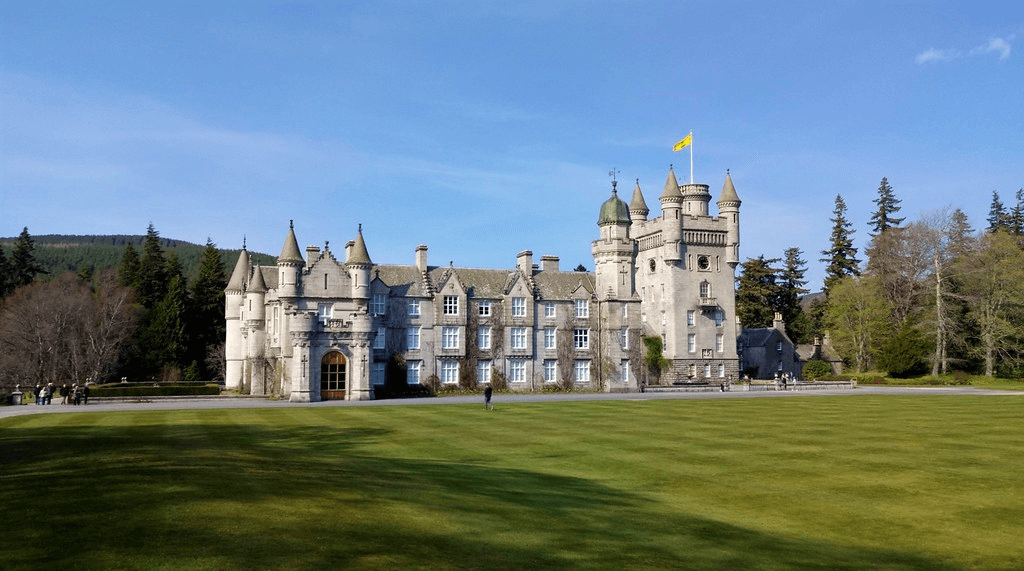
- Brief History: Balmoral Castle, the Scottish residence of the British royal family since 1852, epitomizes the Victorian era’s love affair with the Highlands. Purchased by Prince Albert, Queen Victoria’s consort, the estate has been the serene retreat for generations of royals. Its history, interwoven with tales of royal hospitality and solitude, reflects the deep connection between the monarchy and Scotland.
- Architectural Highlights: Designed by architect William Smith, Balmoral’s architecture is a testament to the Scottish Baronial style, characterized by its rugged facade, conical spires, and battlements. The estate’s expansive grounds, designed by Prince Albert, blend seamlessly with the natural beauty of the Highlands.
- Visitor Information: Balmoral is open to the public from April to July, before the royal family’s annual visit. Visitors can explore the castle’s gardens, exhibitions, and some parts of the interior, offering a rare glimpse into royal life.
Dunnottar Castle
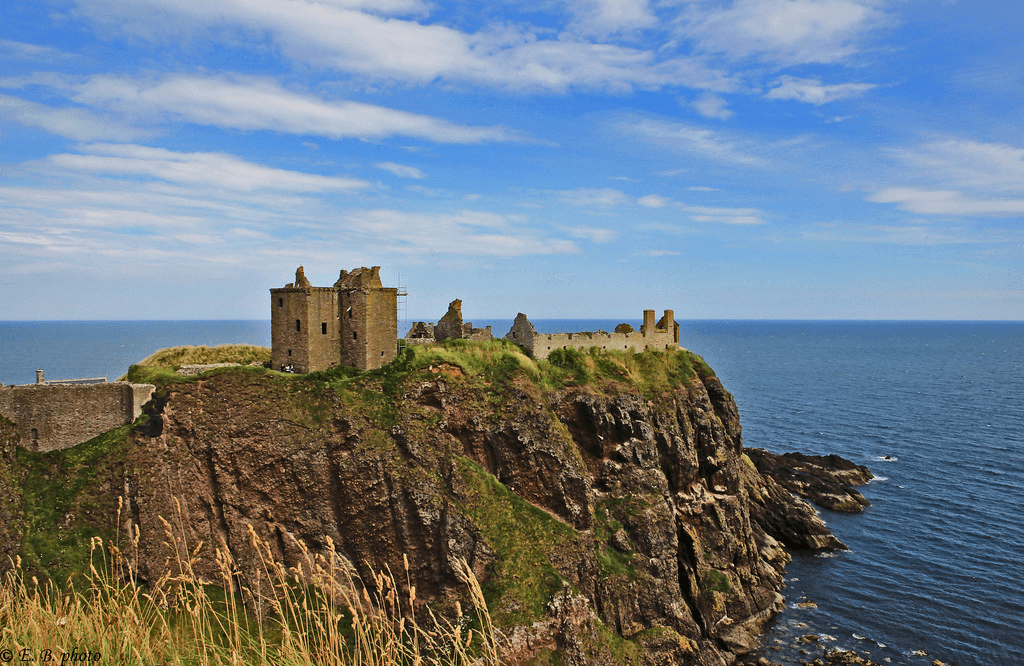
- Brief History: Dunnottar Castle’s dramatic location on a rocky headland, surrounded by the North Sea, sets the scene for its tumultuous history. Once a Pictish fort, the site has witnessed centuries of sieges and battles, most notably the defense against Cromwell’s army in the 17th century, safeguarding the Scottish Crown Jewels.
- Architectural Highlights: The ruins of Dunnottar offer breathtaking views and a sense of rugged beauty. Its remaining structures, including the 14th-century tower house and the 16th-century palace, evoke the castle’s strategic importance and architectural evolution over centuries.
- Visitor Information: Open year-round, Dunnottar Castle welcomes visitors to explore its ruins, offering panoramic views of the sea and countryside. The steep path to the entrance is part of the adventure, immersing visitors in the castle’s dramatic history.
Crathes Castle
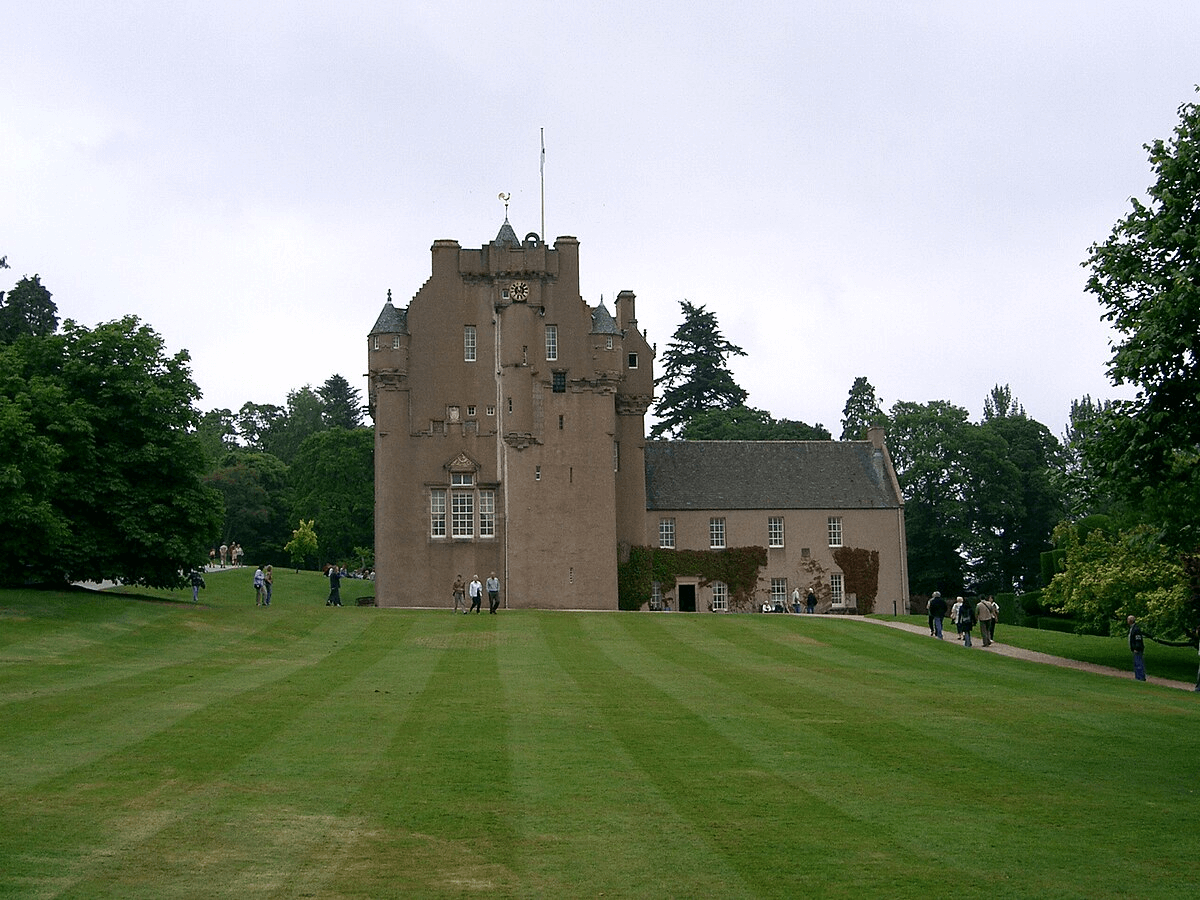
- Brief History: Crathes Castle, a 16th-century tower house, is renowned for its well-preserved structure and its connection to the Burnett family, who lived there for over 350 years. The castle’s history is rich with tales of royalty, including a visit from Queen Victoria.
- Architectural Highlights: Crathes Castle is celebrated for its exquisite painted ceilings and historic walled garden. The castle’s architecture showcases the refinement of Renaissance building techniques in Scotland, with its intricate woodwork and stunning tower.
- Visitor Information: The castle and gardens are open to the public, offering guided tours that highlight its historical significance and architectural beauty. The estate’s gardens, divided into eight sections, are a horticultural masterpiece, blooming with color throughout the year.
Slains Castle

- Brief History: The ruins of Slains Castle, often linked to Bram Stoker’s inspiration for “Dracula,” tell a story of transformation from a 16th-century fortress to a haunting cliffside ruin. Its association with literary history and its strategic location overlooking the North Sea make it a fascinating site.
- Architectural Highlights: Though now a ruin, Slains Castle’s remaining structure allows visitors to imagine its past grandeur. The open sea views and rugged landscape encapsulate the essence of Scotland’s natural beauty and architectural heritage.
- Visitor Information: Accessible to the public without an entrance fee, Slains Castle offers an unguided exploration experience. Visitors are advised to tread carefully among the ruins and enjoy the unparalleled views of the coastline.
Photo Author Andrew-Leatherbarrow
Craigievar Castle
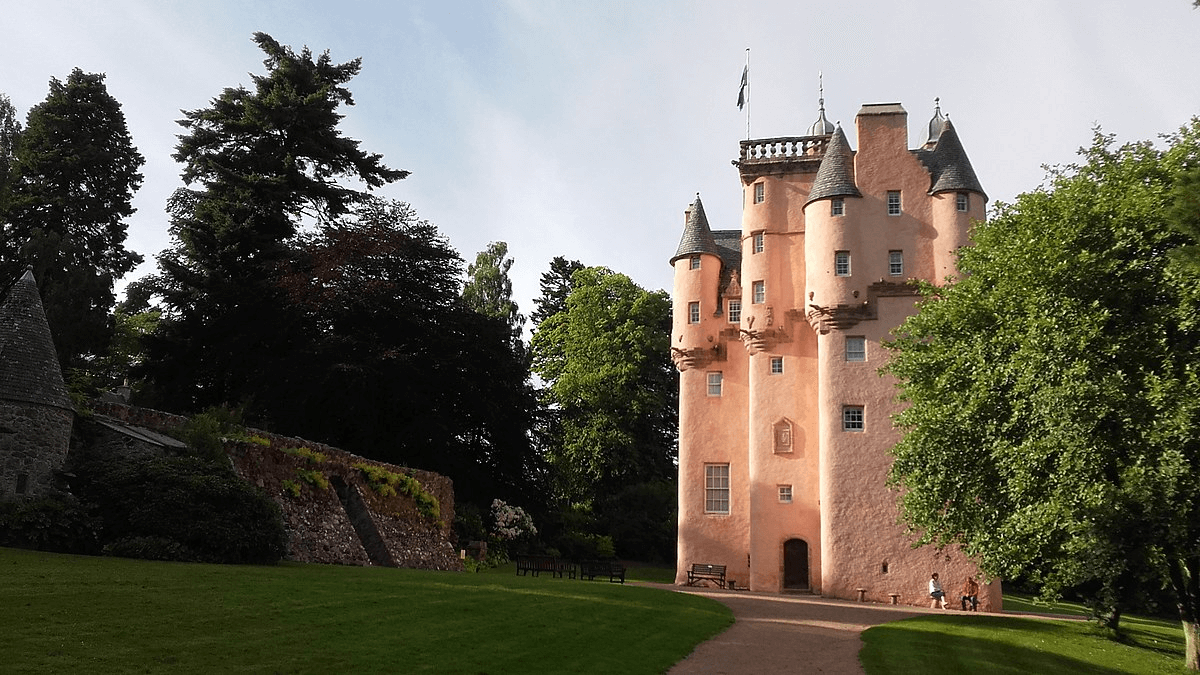
- Brief History: Craigievar Castle, a fine example of Scottish Baronial architecture, was completed in 1626 and is said to have inspired the design of Walt Disney’s Cinderella Castle. Its history is intertwined with the Forbes family, who were its original occupants.
- Architectural Highlights: The castle’s iconic pink-hued harling exterior and fairy-tale turrets captivate visitors. Inside, its preserved period furniture and artwork offer a glimpse into 17th-century Scottish life.
- Visitor Information: Craigievar Castle is managed by the National Trust for Scotland. Guided tours are available, allowing visitors to explore its many rooms and learn about its history and preservation efforts. The castle’s surrounding grounds offer scenic walks and photo opportunities.
Photo Author Anais Culot
Castle Fraser
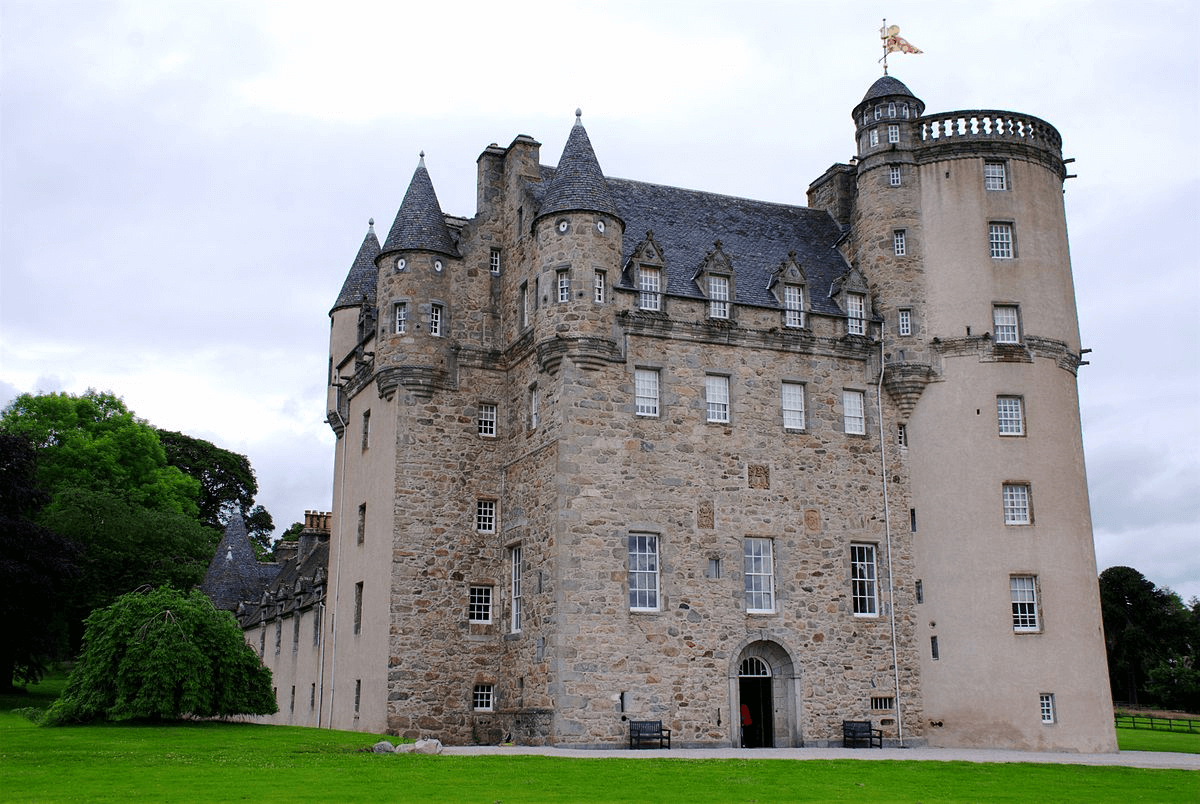
- Brief History: Castle Fraser, one of the grandest of the Scottish baronial tower houses, was completed in 1636. It tells the story of the Fraser family’s prominence in Scottish history, showcasing opulence and strategic architecture.
- Architectural Highlights: The castle’s intricate stone carvings, massive wooden Great Hall, and secret staircases offer visitors a journey through time. Its extensive estate features beautiful gardens and woodland walks.
- Visitor Information: Managed by the National Trust for Scotland, Castle Fraser offers guided tours that reveal its rich history, architecture, and collection of antiques. The estate’s grounds are a haven for nature lovers, with marked trails and picnic areas.
Fyvie Castle
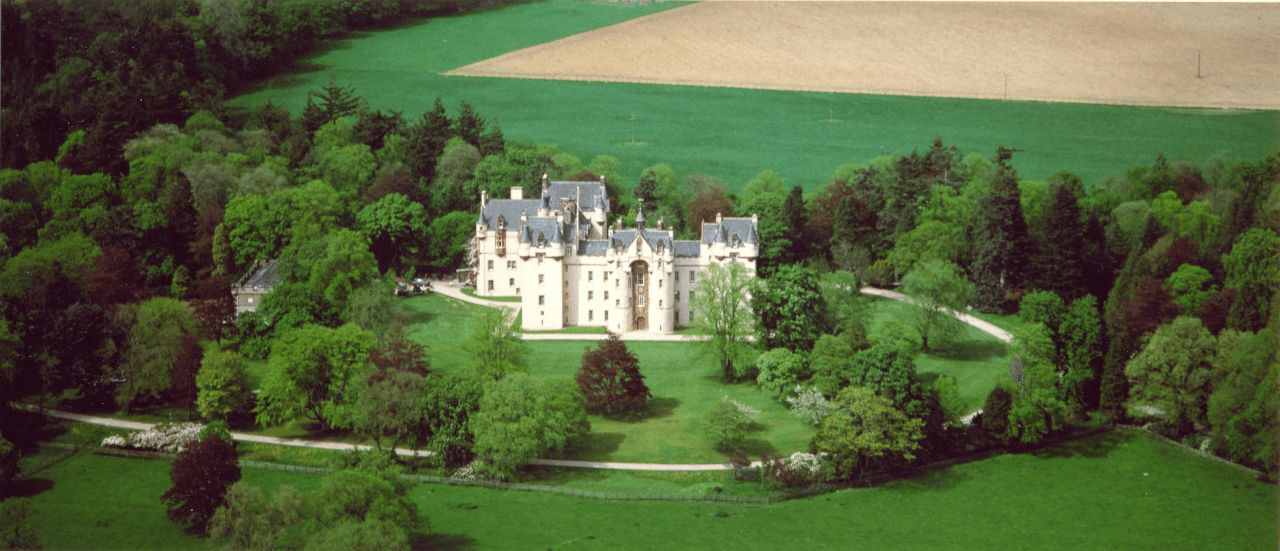
- Brief History: Fyvie Castle’s origins date back to the 13th century, with each of its five towers representing centuries of Scottish history. The castle has been home to various Scottish families, each contributing to its expansion and legacy.
- Architectural Highlights: Fyvie Castle is renowned for its stunning interiors, including the Portrait Gallery and the lavish Edwardian interiors. Its collection of arms and armor, and fine art, adds to the allure.
- Visitor Information: Fyvie Castle, also under the care of the National Trust for Scotland, welcomes visitors to explore its opulent rooms and extensive grounds. The castle’s gardens, with their picturesque lakes and walks, are particularly enchanting.
Braemar Castle
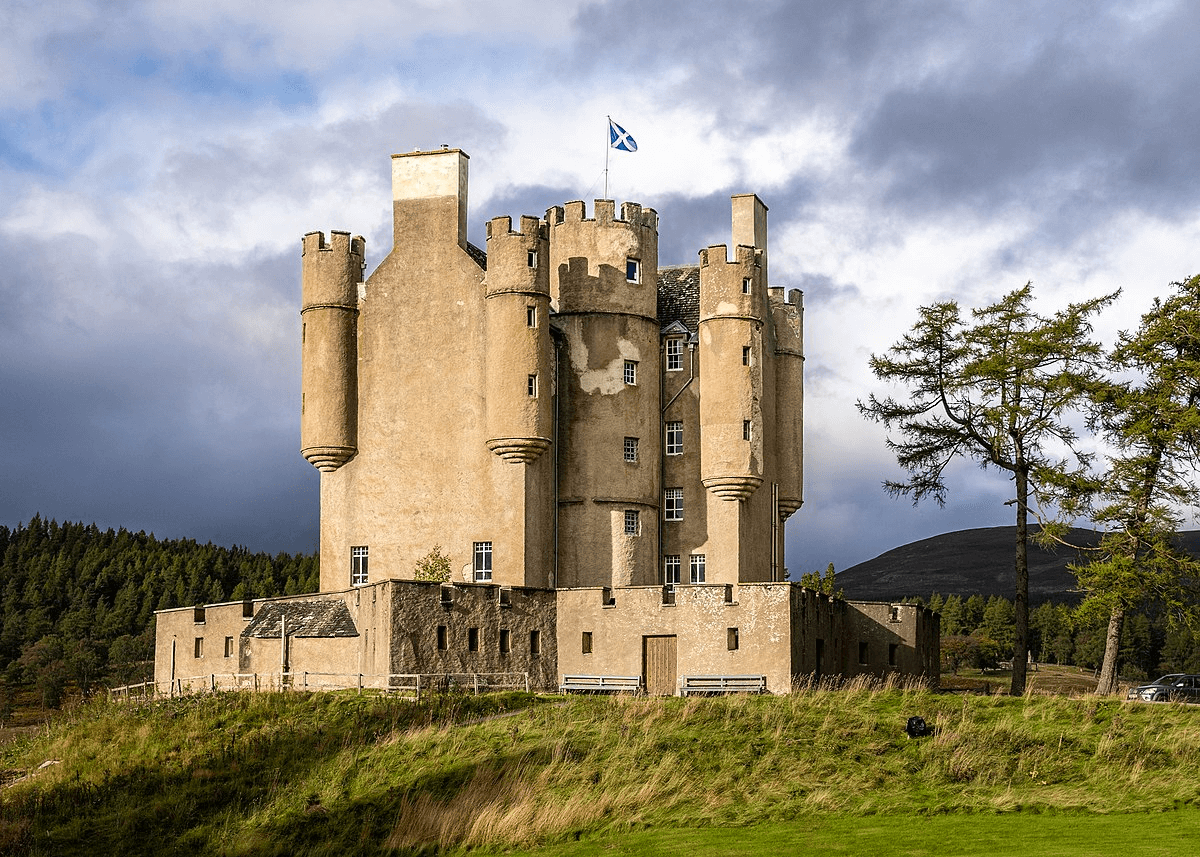
- Brief History: Built in 1628 by the Earl of Mar as a hunting lodge and stronghold, Braemar Castle has played a role in the Jacobite uprisings and has a rich history of hospitality and defense. It’s been run by the community since 2007, showcasing a unique model of heritage conservation.
- Architectural Highlights: The castle’s star-shaped perimeter and 12-foot-thick walls are distinctive features. Inside, its furnished rooms and historical displays tell the story of its past inhabitants and their way of life.
- Visitor Information: Braemar Castle is open to the public, offering guided tours that highlight its fascinating history and community-led preservation efforts. The surrounding Highlands provide a stunning backdrop for exploration and photography.
Photo Author Monster4711
Cluny Castle
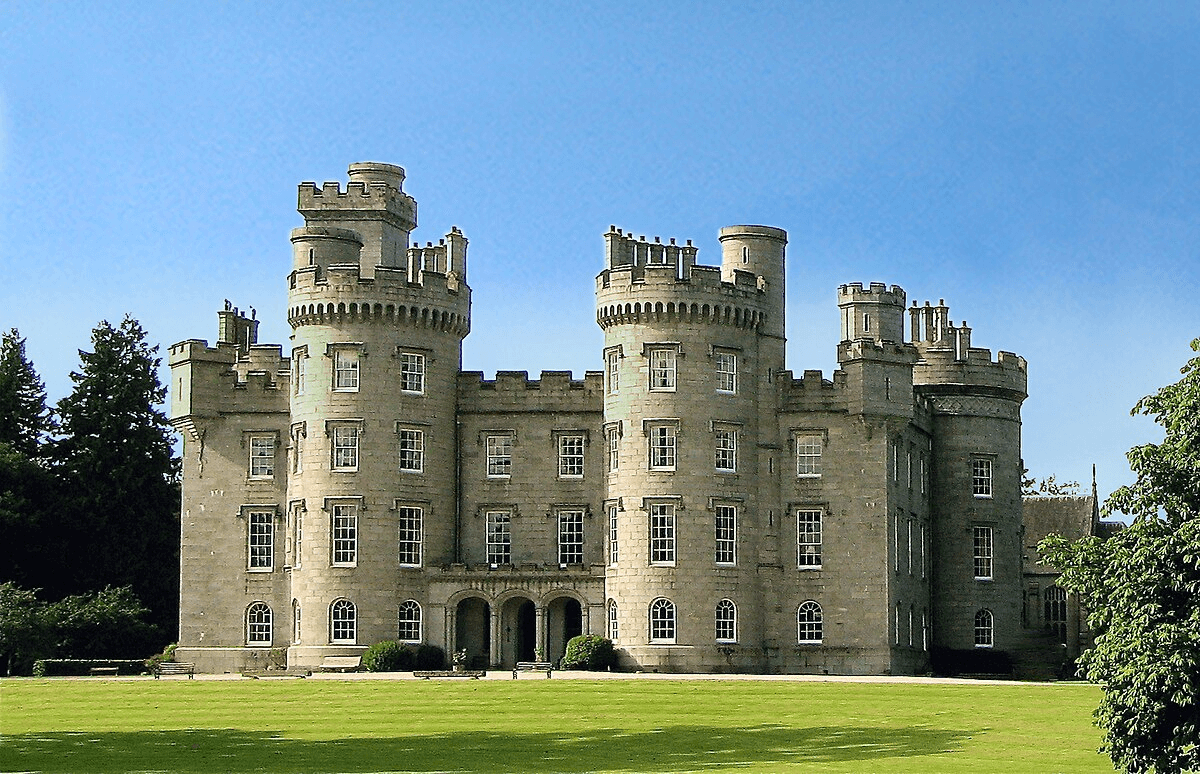
- Brief History: Cluny Castle, with its origins in the 14th century, has undergone several transformations, culminating in its current Gothic Revival appearance. It has remained in the hands of the Gordon family, reflecting centuries of Scottish aristocratic life.
- Architectural Highlights: The castle is famed for its beautiful chapel and the grandeur of its interiors, which have been meticulously preserved. The estate’s landscaped grounds are equally impressive, offering a glimpse into the lifestyle of Scotland’s landed gentry.
- Visitor Information: Cluny Castle is primarily a private residence but opens its doors for weddings and events. Visitors can experience its elegance and historical ambiance by attending these occasions or by special arrangement.
Photo Author Cosmolinzeegordon
Drum Castle
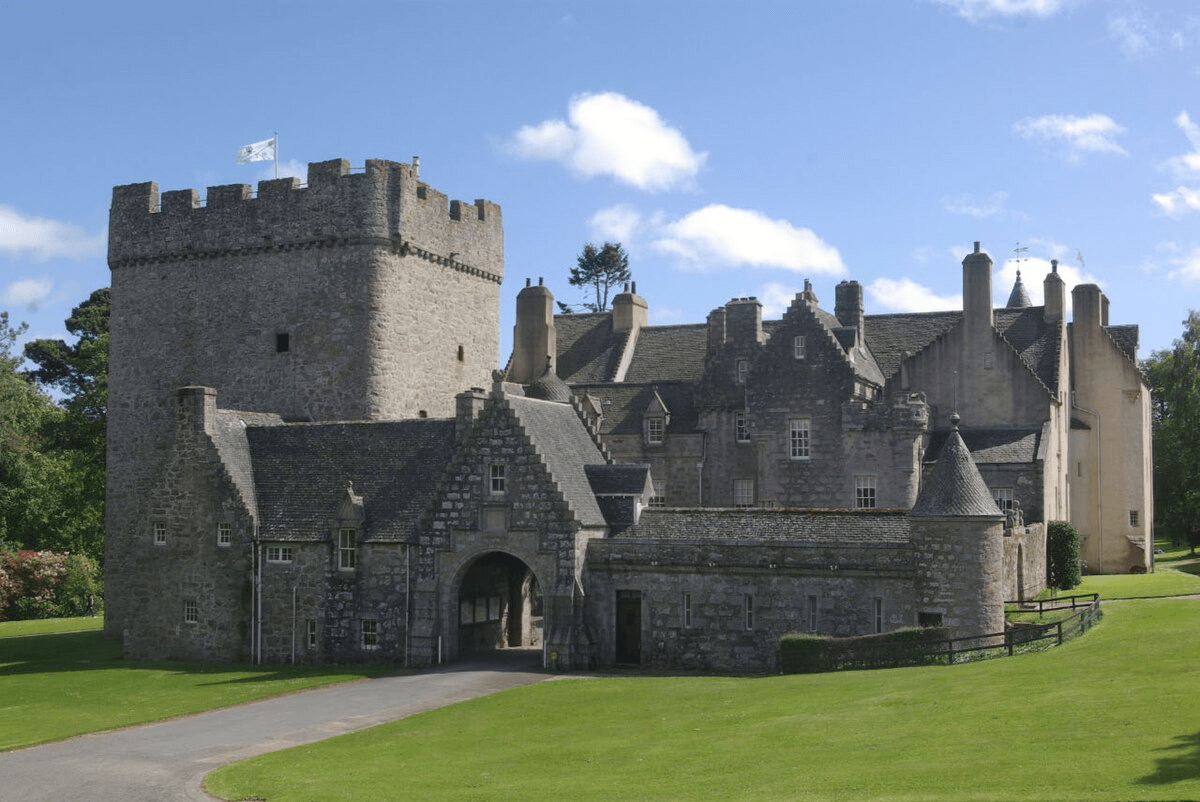
- Brief History: Drum Castle, owned by the Irvine family for over 650 years, showcases a blend of medieval, Jacobean, and Victorian architecture, reflecting its long history and the changing architectural styles through the centuries.
- Architectural Highlights: The castle’s 13th-century tower, one of Scotland’s oldest, stands alongside a later mansion house. Its Garden of Historic Roses, blooming in season, adds to the charm and allure of the estate.
- Visitor Information: Managed by the National Trust for Scotland, Drum Castle offers access to its historic rooms, gardens, and woodland trails. The castle’s varied history and architectural styles make it a fascinating visit for history and architecture enthusiasts.
Photo Author Stephen McKay
Conservation and Tourism: Preserving Aberdeenshire’s Castles
The castles of Aberdeenshire are not only historical landmarks but also vital components of Scotland’s cultural heritage and tourism industry. Their conservation is essential for ensuring that future generations can explore and appreciate these connections to the past. This section delves into the efforts made towards preserving these iconic structures and examines how tourism contributes to their ongoing legacy.
The Role of Conservation
Conservation efforts for Aberdeenshire’s castles involve a delicate balance between preserving historical integrity and accommodating the needs of modern visitors. These initiatives are often spearheaded by organizations such as the National Trust for Scotland and Historic Environment Scotland, alongside private owners. Restoration projects vary from essential maintenance to extensive renovation works, all aimed at stabilizing structures, restoring architectural features, and making the sites accessible and safe for visitors.
Key conservation challenges include combating the effects of weathering, managing the impact of increased visitor numbers, and sourcing traditional materials and craftsmanship for restorations. Despite these hurdles, successful conservation projects have breathed new life into many castles, allowing them to stand as proud reminders of Scotland’s rich history.
Tourism’s Impact
Tourism plays a crucial role in the preservation of Aberdeenshire’s castles. Entry fees, guided tours, and merchandise sales generate revenue that supports maintenance and conservation projects. Moreover, tourism helps raise awareness about the historical and cultural significance of these sites, fostering a broader appreciation and support for heritage preservation.
However, managing tourism sustainably is critical to ensuring that it does not adversely affect the structural integrity of the castles or their surrounding environments. Strategies such as limiting visitor numbers, offering virtual tours, and promoting off-peak visits are employed to mitigate these risks.
Enhancing Visitor Experience
Efforts to enhance the visitor experience include providing educational programs, interactive exhibits, and special events that bring the history of these castles to life. These initiatives not only make visits more enjoyable and informative but also help establish a deeper connection between visitors and Scotland’s heritage.
The Benefits of Heritage Tourism
Heritage tourism, centered on visits to historical sites like castles, has significant economic and cultural benefits. It supports local economies through job creation and promotes cultural exchange. Furthermore, it reinforces the value of preserving historical sites, not just as monuments to the past but as living entities that continue to shape Scotland’s identity and future.
Visiting Aberdeenshire’s Castles: Practical Advice
For those planning a journey through Aberdeenshire’s castles, a few practical tips can make the experience more enjoyable and enriching:
- Best Times to Visit: Spring and early autumn offer pleasant weather and smaller crowds. Check castle opening times and dates, as some may be closed or have limited access during winter or for private events.
- Ticket Information: Purchase tickets in advance if possible, especially for the more popular castles. Look into passes that offer access to multiple sites for a discounted rate.
- Touring Tips: Wear comfortable shoes and be prepared for Scotland’s unpredictable weather. Many castles are set in expansive grounds, ideal for picnics or leisurely walks.
- Exploring Beyond the Main Attractions: While iconic castles like Balmoral and Dunnottar capture the headlines, smaller, less-known castles also offer fascinating insights into Scotland’s past. These can often provide a more intimate and less crowded experience.
Suggested Itineraries
- The Castle Trail: Follow the official Castle Trail, which guides visitors through 19 of Aberdeenshire’s most famous castles, offering a mix of ruins, preserved estates, and still-inhabited homes.
- Themed Tours: Consider themed tours focusing on specific aspects of castle history, such as ghost stories, architectural styles, or historical figures associated with the sites.

